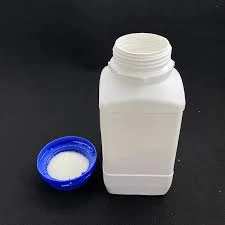Neutralizer Water Treatment An Essential Guide
Water is an indispensable resource for life, industry, and agriculture. However, the quality of water can often be compromised due to various contaminants, leading to harmful effects on health and the environment. One of the effective methods for improving water quality is the use of neutralizer water treatment systems. In this article, we will explore what neutralizers are, why they are important, and how they work to ensure safe and clean water.
What is Neutralizer Water Treatment?
Neutralizer water treatment generally refers to the process of adjusting the pH of water to make it less acidic or alkaline. This adjustment is crucial, especially for groundwater or surface water sources that may have been affected by industrial runoff, agricultural practices, or natural mineral deposits. A neutralizer, often composed of limestone, calcium carbonate, or magnesium oxide, adds alkaline substances to acidic water. This process helps achieve a balanced pH level, generally around 7, which is considered neutral.
Why is Neutralization Important?
1. Health Safety Water with a low pH (acidic) can be harmful to human health. Acidic water may leach heavy metals like lead and copper from pipes, which can pose serious health risks. Neutralizing the water can help prevent these toxic substances from contaminating drinking water.
2. Protecting Infrastructure Acidic water can be corrosive, causing damage to plumbing systems, appliances, and other infrastructure. By maintaining a neutral pH, neutralizers extend the lifespan of pipes and reduce maintenance costs.
3. Environmental Protection When acidic water flows into rivers and lakes, it can harm aquatic life. Fish and other organisms are sensitive to changes in pH; thus, using neutralization can help protect these ecosystems from damage.
4. Improved Taste and Quality Water that is too acidic or alkaline can have an unpleasant taste. Neutralization helps improve the sensory qualities of water, making it more palatable for users.
neutralizer water treatment

How Does Neutralizer Water Treatment Work?
The process of neutralization typically involves the installation of a filtration system that includes a neutralizing agent. Here's a brief overview of the steps involved
1. Testing Water pH The first step is to test the pH level of the water source. This can be done using simple test kits or sophisticated laboratory equipment.
2. Selecting Neutralizing Agent Based on the test results, the appropriate neutralizing agent is chosen. Common choices include calcite (calcium carbonate) and soda ash (sodium carbonate).
3. Installation of the System A neutralizing filter is installed in the water treatment system. As the water passes through this filter, the neutralizing agent reacts with the acidic water, raising its pH to a more neutral level.
4. Monitoring and Maintenance Regular monitoring of the pH level in the water is vital to ensure the system is functioning correctly. Maintenance involves replenishing the neutralizing media as it becomes depleted over time.
Conclusion
Neutralizer water treatment is a vital process that contributes significantly to public health, environmental conservation, and infrastructure protection. By effectively balancing water pH, neutralizers serve as a line of defense against acidity-related problems. Investing in neutralizer systems not only ensures a safe water supply but also supports sustainable water management practices. As we continue to grapple with water quality issues driven by urbanization and climate change, neutralizer water treatment will remain a crucial tool in our efforts to secure clean and safe water for all.

